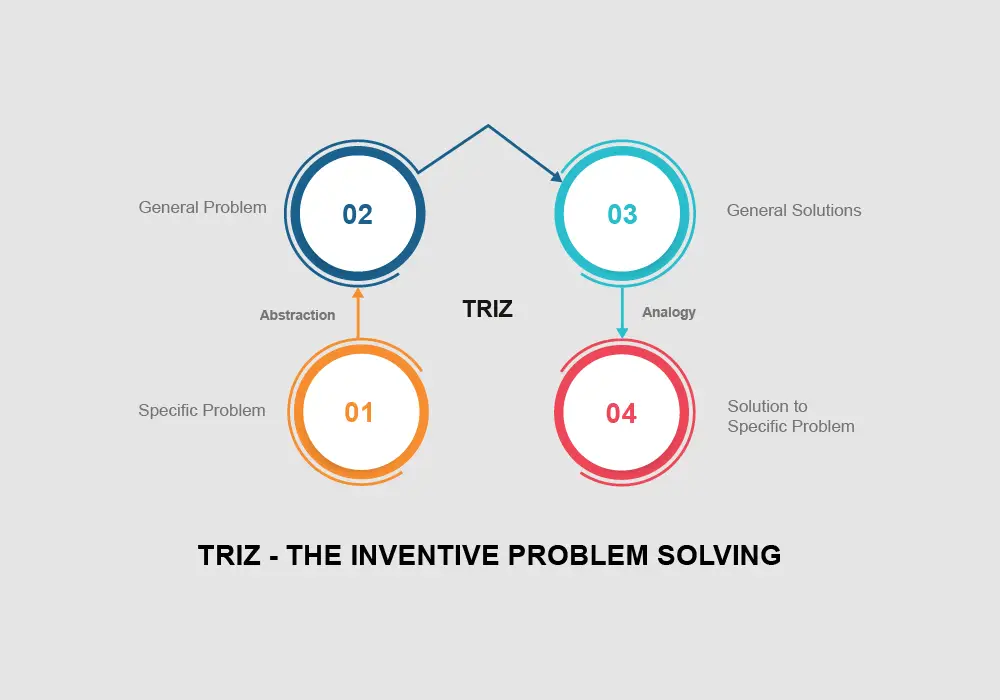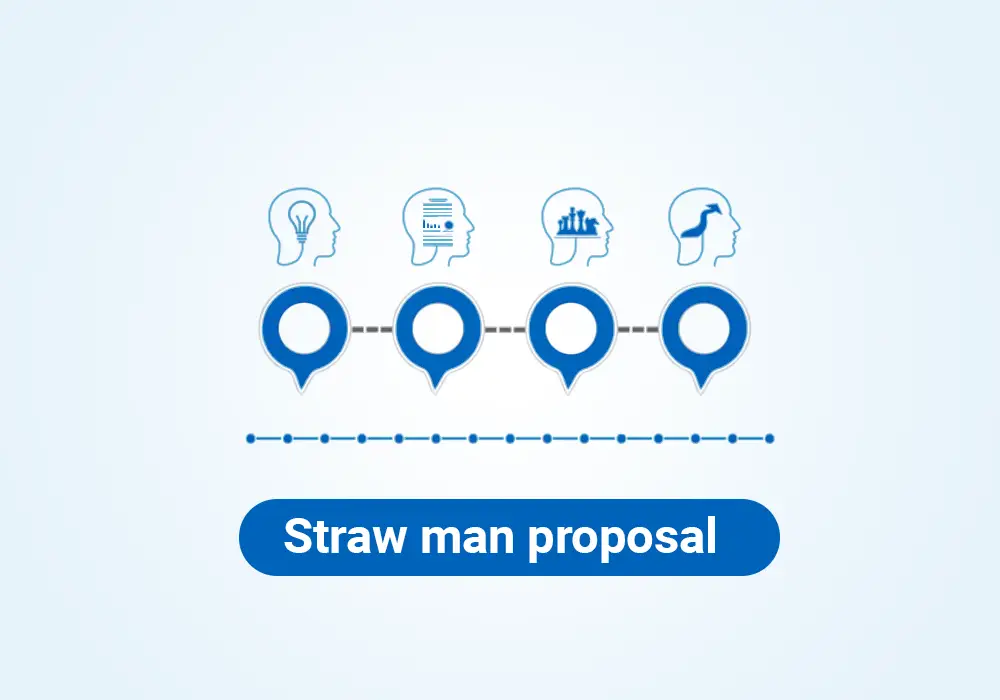TRIZ Inventive Problem Solving

Problems are inherent in the system itself. Every stage of development reveals that conflicts are made for each other. So, problem-solving is an everlasting task for mankind whether on a professional or on a personal level.
What is TRIZ?
Triz is the theory of inventive problem solving developed by Russian inventor Altshuller and his colleagues. In the Russian language, TRIZ refers to Teorya Resheniya Izobreatatelskikh Zadatch. When it comes to English translation it has called a theory of inventive problem-solving. It is a systematic approach for understanding and solving problems that permits clear thinking and the generation of innovative notions. The most significant result of the research was, that the evolution of technological development follows a number of predictable patterns. It is an innovative way of looking at problems and solutions. Atshuller stated that if the latter inventors had the knowledge of earlier solutions their task would have been simpler. He, therefore, set about mining, gathering, and organizing such knowledge.
Altshuller also set the foundation for the development of an analytical approach to solving inventive problems with a quote. “The evolution of all technical systems is governed by objective laws”. Expansion of any part of a system that has already reached the highest level of functional performance will lead to a clash with another part. This will lead to the eventual development of the less evolved part(s). Such a continuing and self-sustaining process will bring the system closer to its ultimate state. He claimed that 98% of patented innovations were based on already explained principle. Only 2% of all patents were really new innovations.
Many companies are using the TRIZ method to develop new products, optimize processes and understanding how their inventions perform as per the objective laws and with the trends in the market. TRIZ has become the most widely used tool for inventive problem solving with the support of technical and objective principles of product development.
To get improvement in systems TRIZ uses 5 basic principle and 40 inventive principles by defining 39 basic properties. Altshuller, from his research on over 40,000 most creative patents, found that there are only “39 Features” which either improve or worsen. The contradiction appears while trying to improve one necessary property another necessary property degrades! Conventional problem solving generally leads to a compromise solution.
5 basic principle of TRIZ
- The ideal ultimate result
Inventive problem solving is not tied to convention methods. It is thinking beyond the usual frames and gets an ideal result. TRIZ inspires people not to be satisfied too quickly with the answers to a problem, but to be always open to even improved ideas.
- Less is more
Use what resources you have instead of searching for more investment to arrive at a better idea.
- The solution is close to your hand
Since the problem is inherent in the systems, solutions also exist there. TRIZ helps people define problems in terms of repeatedly used general principles, which enable probing for solutions outside their primary field of knowledge.
- Identify inherent contradictions
When inherent conflicts are defined, the solution often comes next. Searching for innovation is equal to problem-solving.
- Lines of evolution
Evolution occurs in a line sequence. The evolution of all technical systems is governed by objective laws. There are stable patterns that make the evolution of technology predictable.
Many patents had, in the past, have overcome these discrete contradictions in several different fields. The clashes were solved over and over again, sometimes; these were spaced several years separately. He concluded that only “40 inventive principles” were used to resolve these conflicts fully, and not as a trade-off or compromise. He further claimed that, if the latter investigators recognized these earlier results, they would have solved their own problems with more ease.

40 inventive principles
- Segmentation: when segmenting the product into separate parts as a result the degrading part could be isolated.
- Taking out: take out conflicting part from the product.
- Local quality: By changing the assembly of products in a specific place, the desired product is shaped.
- Asymmetry: Change the shape of an object from symmetrical to asymmetrical
- Merging: by merging properties, functions, or parts of an object, new product
could be created.
- Universality: Make a product more universal, uniform, wide-ranging and multi-
functional
- Nested doll: Place many objects inside others
- Counterweight: Compensate the contradictory property of the product by integrating it with another object that provides a lifting force
- Preliminary counteraction: identify the properties which might create problems and take preliminary counteraction
- Preliminary action: Place object before it is required so that it can go into action instantly from the most convenient location for their delivery
- Cushion in advance: arrange emergency measures in advance
- Equipotentiality: Avoid tension in or around an object’s setting
- The other way round: Implement a contrasting or reverse action
- Spheroidality: replace linear parts with rounded parts
- Dynamics: build a product or property provisionally flexible or flexible for a short while
- Partial or excessive actions: use little more than required or use little less of the same product
- Transition into another dimension: use different dimension, such as linear to horizontal
- Mechanical vibrations: Use vibrations to achieve a positive result
- Periodic action: use pulsating actions instead of continuous actions
- Continuity: Carry on work constantly and eradicate all sluggish or intermittent actions
- Rushing through: use high-speed processors to prevent errors
- Blessing in disguise: Use risky factors to add value
- Feedback: Present feedback by using output as a means of input, output assessments can be improved
- Intermediary: Combine one object provisionally with another
- Self-service: Make an object assist itself by performing supplementary helpful functions
- Copying: instead of high-cost or easily broken objects, use inexpensive copies
- Cheap objects: Use low-cost and/or disposable objects to reduce costs
- Replace mechanical system: Substitute a mechanical system with a different shape, action or function
- Pneumatics and hydraulics: Substitute solid parts of an object with pneumatic (air) or hydraulic (water) parts
- Flexible shells: Replace old-style constructions with flexible shells
- Porous materials: use porous materials instead of hardy substances
- Color changes: Change the color or other photosensitive property of an object
- Homogeneity: combine two objects with identical properties
- Discarding and recovering: By creating objects or parts of objects that have fulfilled their utility go away and by successively restoring them, they can be reused.
- Parameter changes: Change the properties of an object
- Phase transitions: Use phenomena happening during chemical phase evolutions
- Thermal expansion: Transform heat energy to mechanical energy
- Strong oxidants: Strengthen oxidative processes to improve a function or process
- Inert atmosphere: Replace a neutral environment to support a chosen function
- Composite materials: convert homogeneous to composite objects
The main function of the contradiction matrix was to simplify the method of selecting the most appropriate Principle to resolve a specific contradiction.


